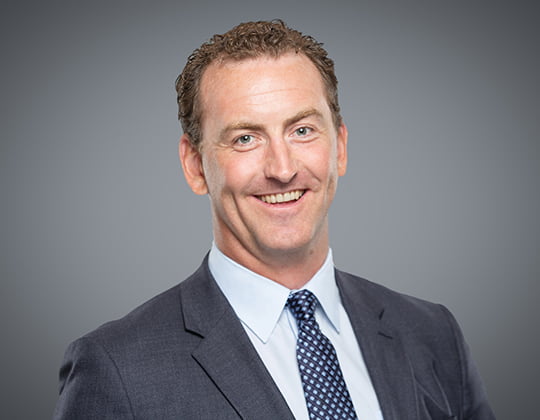The treatment and legal protection of the transgender community has become an increasingly important topic globally. In North America, a recent North Carolina law requiring people to use public bathrooms that correspond with the sex on their birth certificate rather than their gender identity became the topic of controversy and public outcry. The National Basketball Association released a statement condemning North Carolina’s[1] legislation and indicated that it might move the 2017 NBA All-Star Game as a result.[2] In contrast, recently introduced Canadian federal legislation is intended to protect transgender Canadians against discrimination and violence by specifying “gender identity” for protection under the Canadian Human Rights Act and the Criminal Code.
For sports organizations, the Canadian Centre for Ethics in Sport (“CCES”) released its policy guidance document on May 4, 2016, designed to help with the development of inclusive policies for transgender athletes. “Creating Inclusive Environments for Trans Participants in Canadian Sport Guidance for Sport Organizations” outlines a variety of best practices and four specific principles that organizations should consider adopting in order to welcome everyone to participate in sport as they are and in the gender with which they identify.
CCES’ recommended best practices that foster a positive verbal, emotional and physical environment for transgender participants include:
- Ensure that key organizational documents proactively state the organization’s intention to be inclusive.
- Enquire about and respect an individual’s right to determine their preferred name and gender markers.
- Ensure that information gathered from all participants is necessary and appropriate. Avoid seeking information, unless it is truly relevant, that might unwittingly oblige individuals to divulge personal information.
- Maintain information and records in a way that respects an individual’s right to privacy and confidentiality.
- Ensure all written materials and websites use inclusive language and images.
- Have clear and documented organizational processes in place that respond to participants’ individual needs.
- Provide learning opportunities that build the capacity of staff, volunteers, participants and spectators to understand and support diverse gender identities and gender expressions.
- Provide safe access to washrooms and change-room facilities.[3]
- Ensure uniforms and dress codes respect an individual’s gender identity and gender expression.
- Avoid forms that capture unnecessary information, such as declaration of gender, and ensure that when such information is required, categories are inclusive.
In addition to the above best practices, the CCES urges sport organizations to clarify their eligibility requirements for transgender participants by promulgating the following policy guidance, which is aligned with the established Long-Term Athlete Development (LTAD) model[4]:
Policy Guidance #1
Individuals participating in development and recreational sport, that is LTAD stages Active Start, FUNdamental, Learn to Train, Train to Train, Train to Compete (until international federation rules apply) and Active for Life, should be able to participate in the gender with which they identify and not be subject to requirements for disclosure of personal information beyond those required of cisgender[5] athletes. Nor should there be any requirement for hormonal therapy or surgery.
Policy Guidance #2
Hormone therapy should not be required for an individual to participate in high-performance sport, that is LTAD stages Train to Compete (once international federation rules become a factor) and Train to Win, in the gender category that is consistent with their gender identity, unless the sport organization can prove that hormone therapy is a reasonable and bona fide requirement.
Policy Guidance #3
Individuals should not be required to disclose their transgender identity or history to the sport organization in order to participate in high-performance sport, that is LTAD stages Train to Compete (once international federation rules become a factor) and Train to Win, unless there is a justified reason requiring them to do so.
Policy Guidance #4
Surgical intervention should not be required for an individual to participate in high-performance sport, that is LTAD stages Train to Compete (once international federation rules become a factor) and Train to Win, in the gender category that is consistent with their gender identity.
The CCES’ policy guidance does not exempt transgender athletes from complying with the CCES’ Canadian Anti-Doping Program. We encourage organizations and/or transgender athletes to seek information from the CCES to determine the relevant rules and requirements applicable to the athletes’ respective level of competition.
As well, it is important that sport organizations have inclusive policies that clearly define the consequences should these policies not be followed, including an effective complaints process.
Canada is positioned at the forefront of transgender rights. Canadian sports organizations have the opportunity to demonstrate values that align with the inclusive characteristics for which Canada is becoming a global ambassador.
If you or your organization requires information or assistance in this regard, including regarding implementing policies and procedures that conform with CCES’ policy guidance on inclusive environments for transgender participants in Canadian sport, please contact Mac Allen at mallen@weirfoulds.com or 416-947-5027.
[1] The 2017 NBA All-Star Game is scheduled to be held in Charlotte, North Carolina.
[2] See Brian Mahoney, “Silver: Law change needed to keep ’17 All-Star in Charlotte”, online: http://www.nba.com/2016/news/04/21/nba-commissioner-adam-silver-says-change-in-nc-law-needed-for-all-star-in-charlotte.ap/.
[3] In February 2016, the Toronto District School Board announced that it will open all-gender washrooms in all public schools across the city.
[4] The LTAD model identifies seven stages of development: Active Start (generally 0-6 years); FUNdamental (generally girls 6-8, boys 6-9); Learn to Train (generally girls 8-11, boys 9-12); Train to Train (generally girls 11-15, boys 12-16); Train to Compete (generally girls 15-21, boys 16-23); Train to Win (generally girls 18+, boys 19+); and Active for Life (any age participant).
[5] “Cisgender” refers to an individual who’s gender identity is in line with the sex they were assigned at birth.
